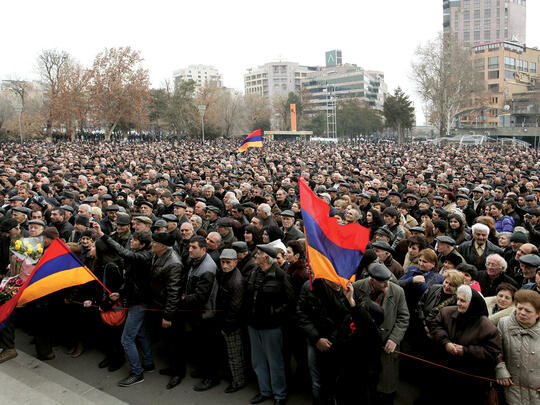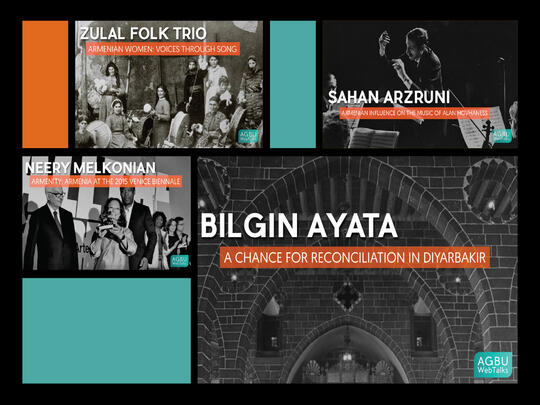In the villages scattered throughout Armenia’s rolling countryside, school teachers and mayors sounded the alarm several years ago. They were startled to see so few girls in their first grade classes compared with the more equal gender balance in the later grades. A closer look revealed that, as ultrasound or sonogram technology became more widely used throughout the country in the late 1990s, women were being increasingly pressured to have abortions when they discovered they were expecting a baby girl. By 2012, there were 115 boys born for every 100 girls, according the United Nations Population Fund (UNFPA). Armenia today has the third highest rate of sex-selective abortions in the world, behind only China and Azerbaijan.
At stake is the future of Armenia. With less than three million inhabitants, the country is already facing a demographic crisis due to a decline in the overall birthrate and continued migration. Approximately 7,200 sex-selective abortions were performed in the last five years alone. At that rate, within twenty years, Armenia will become a society mainly of single men.
Anahit Sahakyan has studied the phenomenon of gender discrimination since 1997 in her capacity as the President of the Association of Women of Dilijan and as Deputy Dean of the Faculty of Sociology at Yerevan State University. She says the decrease in the number of young women will inevitably affect the country’s so-called “marriage market,” acting as an additional incentive for men to migrate and in turn increasing the number of mixed marriages with women from outside Armenia. “We already have a problem of preserving our identity as a small nation dispersed around the world,” she says, “and that risks being further jeopardized when mixed marriages occur.”
Recent efforts to raise awareness and educate families on the part of several women’s health organizations and documentary filmmakers, greater supervision of medical institutions and calls for legislative changes, together with pressure from the international community have led to some positive developments. In 2016 researchers observed a 1% decrease in the number of sex-selective abortions, reducing the birth ratio to an average 113 boys for every 100 girls.
To date the Armenian government has been slow to act, taking up to a decade to pass a law in August 2016 that outlaws sex-selective abortions. The legislation also requires that a woman seeking an abortion must attend a counseling session with her doctor and wait three days before undergoing the procedure.
Women’s rights advocates, however, contend that the law will do little to curb sex-selective abortions and only increase the number of unsafe illegal procedures. For Lara Aharonian, co-founder of the Women’s Resource Center in Yerevan, the misplaced law is a band-aid solution that focuses on the symptoms instead of tackling the root causes of gender inequality. “We need to break gender stereotypes,” she says, “and teach children from kindergarten that girls are not less valuable in society but right now the government is not doing this.”
Cultural Stereotypes
The pressure on women to undergo sex-selective abortion is rooted in traditional patriarchal values and ingrained cultural stereotypes and prejudices that are more pronounced in rural parts of the country. In the Tavush valley and the province of Gegharkunik in Eastern Armenia, where the sex ratio runs as high as 130 boys for every 100 girls, the problem is compounded by poor socio-economic conditions. Traditional Armenian families expect their daughters to move in with their husband’s family, while the eldest son assumes the role of the provider, passing on their name to the next generation and ensuring any property inheritance stays within the family. As more men are increasingly moving abroad for seasonal work, the favored male children become “the men of the house” at an early age, reinforcing the perception of boys as workers. A common refrain in the countryside is that “without a boy, the family is incomplete.”
According to Professor Sahakyan, changing such deeply held cultural stereotypes is a complex challenge. “Any change in patriarchal and conservative society, which is aimed at changing cultural values, is seen as a crime against the whole culture,” she says. “And the results won’t be visible for a few generations.”
Eradicating the phenomenon of sex-selective abortions will require both more global attention and government-scale solutions aimed at prevention to educate the population, support social workers, psychologists, medical professionals and increase engagement and accountability.
Collective efforts undertaken by several women’s health and rights organizations within Armenia, including the Women’s Resource Center and Women’s Support Center in Yerevan, AGBU Hye Geen centers in Talin, Vanazdor, Yeghvard and Yerevan under the auspices of the Support for Women project and the Association of Women with University Education in Dilijan, together with research and assistance from the United Nations Population Fund Armenia, UNICEF, the World Bank, and World Vision among other international NGOs, are starting to shift cultural stereotypes that undervalue the role of women in Armenian society toward greater recognition of gender equality.
The challenge, adds Lara Aharonian, also represents an opportunity for the Armenian diaspora to play a valuable role by using its long history of advocacy, fundraising and communications skills to partner with civil society and women’s groups to help empower young Armenian women.
Banner photo by Stephanie Rabemiafara/Getty Images











